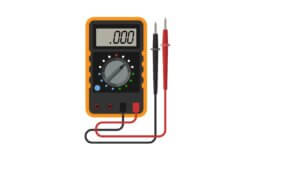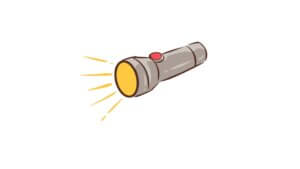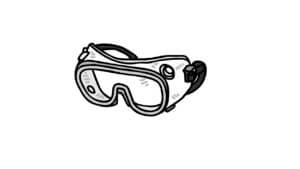
Hotwiring a golf cart, often perceived as a skill for the resourceful or mischievous, carries responsibilities. This guide on “How to Hotwire a Golf Cart” walks you through the process, highlighting safety measures, legal considerations, and ethical behavior. Explore step-by-step instructions and alternative solutions, ensuring a comprehensive understanding of this skill within legal and ethical boundaries.
Hotwiring, in essence, is the act of starting a vehicle without using the conventional key method. Understanding how to hotwire a golf cart can be valuable in emergencies or for educational purposes. However, it’s crucial to use this knowledge responsibly and within the bounds of the law.
Read also: How to Remove the Speed Limiter on Electric Golf Cart?
How to hotwire a golf cart, Yamaha?
Here are some alternatives to consider:
- If you’ve lost your keys: Contact a Yamaha dealer or qualified mechanic for assistance. They can help you replace your keys or bypass the ignition system safely and legally.
- If you’re having trouble starting your golf cart: There are many reasons why your cart might not start besides a faulty ignition system. Consult a mechanic to diagnose and fix the issue properly.
- If you’re interested in learning more about golf cart repair: There are many resources available online and in libraries that can teach you the basics of golf cart maintenance and repair. However, it’s important to remember that working on electrical systems can be dangerous and should only be done by qualified individuals.
I hope this helps!
Read also: Golf
Tools Required for Hotwiring
List essential tools for the hotwiring process and stress the importance of safety precautions to prevent accidents or damage to the golf cart.
a. Screwdriver

- A Phillips or flat-head screwdriver is essential for accessing the ignition panel and removing any covers.
b. Wire Strippers

- To expose the bare metal of the wires, wire strippers are crucial for a clean connection.
c. Pliers

- Use pliers to grip and manipulate wires securely, ensuring a stable connection.
d. Multimeter

- A multimeter helps identify the correct wires by measuring voltage and conductivity.
e. Insulated Gloves

- Safety is paramount. Insulated gloves protect you from electric shocks during the hotwiring process.
f. Electrical Tape

- Wrap exposed wires with electrical tape to secure connections and prevent short circuits.
g. Key Ignition Diagram (Optional)

- Having a diagram of the golf cart’s key ignition system can assist in identifying the correct wires.
h. Flashlight

- Ensure proper visibility, especially if you’re working in low-light conditions or in an unfamiliar area.
i. Safety Glasses

- Protect your eyes from any debris that may be dislodged during the process.
j. Emergency Shut-Off Switch (Optional)

- A switch that can quickly disconnect power in case the hotwiring process needs to be halted.
k. Owner’s Manual (Optional)

- The owner’s manual may contain information on the golf cart’s wiring system, aiding in the identification of key components.
Safety Precautions:
- Disconnect the Battery: Always disconnect the golf cart’s battery before attempting to hotwire to avoid electric shock.
- Ensure Ventilation: If working in an enclosed space, ensure proper ventilation to prevent the buildup of fumes.
- Wear Safety Gear: Use insulated gloves and safety glasses to protect against electrical hazards and debris.
Having the right tools and taking necessary safety precautions will contribute to a successful and safe hotwiring process. Always remember to use this knowledge responsibly and within legal bounds.
Read also: How to Wash Golf Shoes?
Reasons for Hotwiring a Golf Cart
Preparing the Golf Cart
Before diving into the hotwiring process, it’s crucial to adequately prepare the golf cart to ensure a smooth and safe experience. Proper preparation not only enhances the success of hotwiring but also minimizes the risk of damage to the vehicle and ensures the safety of the person attempting the procedure. Here’s a detailed guide on how to prepare your golf cart for the hotwiring process:
-
Safety First:
- Prioritize safety by wearing appropriate personal protective equipment (PPE), including gloves and safety glasses, to safeguard against potential hazards.
-
Location Matters:
- Choose a well-ventilated and well-lit area for the hotwiring process. Ensure that the golf cart is parked on a flat surface, reducing the risk of accidents.
-
Secure the Golf Cart:
- Ensure the golf cart is in a secure and stable position. Engage the parking brake and, if available, use wheel chocks to prevent unintentional movement during the procedure.
-
Battery Disconnection:
- Disconnect the golf cart’s battery to eliminate the risk of electric shock during the hotwiring process. Locate the battery and follow the manufacturer’s guidelines for safe disconnection.
-
Ignition System Familiarization:
- Take a moment to familiarize yourself with the golf cart’s ignition system. Refer to the owner’s manual or any available documentation to understand the components involved in the ignition process.
-
Tool Check:
- Ensure that you have all the necessary tools for the hotwiring process, including a screwdriver, wire strippers, pliers, and any additional tools specific to your golf cart model.
-
Emergency Shut-Off Plan:
- Establish a quick emergency shut-off plan in case anything goes wrong during the hotwiring attempt. This could include having someone nearby to assist or understanding how to swiftly disconnect power.
-
Survey the Surroundings:
- Be aware of your surroundings. Check for any potential hazards, and ensure that you won’t be disturbed or interrupted during the hotwiring process.
-
Weather Considerations:
- If working outdoors, consider the weather conditions. Avoid hotwiring during adverse weather, such as rain or extreme temperatures, which may compromise safety.
-
Communication:
- Inform someone trustworthy about your intentions to hotwire the golf cart. Having someone aware of the process enhances safety, especially in case of emergencies.
By thoroughly preparing the golf cart and the workspace, you set the stage for a successful and secure hotwiring attempt. This preparation not only ensures your safety but also contributes to the overall effectiveness of the hotwiring process. Remember, a well-prepared start leads to a well-executed procedure.
Common Mistakes to Avoid
While understanding how to hotwire a golf cart is valuable, it’s equally crucial to be aware of common mistakes that can lead to complications, damage, or even legal consequences. Here’s a comprehensive list of mistakes to steer clear of during the hotwiring process:
-
Skipping Safety Precautions:
- Neglecting to wear safety gear, including gloves and safety glasses, puts you at risk of injury during the hotwiring attempt.
-
Ignoring Legal Considerations:
- Attempting to hotwire a golf cart without legal justification or authorization can lead to legal consequences. Always consider the legality of your actions.
-
Disregarding Battery Disconnection:
- Failing to disconnect the golf cart’s battery before initiating the hotwiring process increases the risk of electric shock and potential damage to the vehicle.
-
Incorrect Wire Identification:
- Misidentifying or connecting the wrong wires can lead to a failed hotwiring attempt or, worse, damage to the ignition system.
-
Overlooking Surroundings:
- Not assessing the surroundings for potential hazards or interruptions can compromise safety during the hotwiring process.
-
Skipping Emergency Shut-Off Plan:
- Proceeding without a plan for emergency shut-off in case of complications may result in delayed responses to potential issues.
-
Rushing the Process:
- Hasty execution of the hotwiring process increases the likelihood of mistakes. Take your time to ensure each step is performed accurately.
-
Neglecting Vehicle Inspection:
- Failing to inspect the golf cart for signs of wear or damage before hotwiring can lead to complications during the process.
-
Lack of Communication:
- Not informing someone trustworthy about your hotwiring attempt can leave you isolated in case of an emergency.
-
Forgetting Safety Tools:
- Neglecting to have emergency tools, such as a fire extinguisher, readily accessible increases the risk of uncontrolled situations.
-
Not Reviewing Wiring Diagrams:
- Bypassing the review of wiring diagrams or documentation may result in confusion during the identification of the correct wires.
-
Disregarding Weather Conditions:
- Ignoring adverse weather conditions can compromise safety. Hotwiring in rain or extreme temperatures is not advisable.
-
Failing to Test the Parking Brake:
- Not ensuring the parking brake is functional may lead to the golf cart moving unexpectedly during the hotwiring attempt.
-
Ignoring Personal Skill Limitations:
- Attempting hotwiring without a sufficient understanding of the process or lacking the necessary skills increases the risk of mistakes.
-
Not Double-Checking Connections:
- Neglecting to double-check that all connections are secure before initiating the hotwiring process may result in failure.
-
Lack of Workspace Clearance:
- Having a cluttered workspace increases the risk of accidents. Clear the area before starting the hotwiring attempt.
-
Overlooking Time of Day:
- Initiating the hotwiring process during low-light conditions may lead to errors due to reduced visibility.
-
Ignoring Safety Guidelines:
- Disregarding general safety guidelines for electrical work can compromise the overall safety of the hotwiring attempt.
-
Underestimating the Importance of Focus:
- Allowing distractions or lack of focus during the hotwiring process can lead to errors and complications.
-
Neglecting a Composed Mindset:
- Allowing panic or anxiety to take over may hinder the accuracy of the hotwiring process. Stay calm and focused throughout.
Read also: How Fast Can a Golf Cart Go?
Safety Measures While Hotwiring
Hotwiring a golf cart requires a methodical approach, and prioritizing safety measures is paramount to ensure a secure and incident-free process. Here’s a comprehensive list of safety measures to adhere to while hotwiring a golf cart:
-
Wear Personal Protective Equipment (PPE):
- Prioritize safety by wearing gloves and safety glasses to protect against potential hazards, especially electrical shocks.
-
Disconnect the Battery:
- Always disconnect the golf cart’s battery before initiating the hotwiring process to eliminate the risk of electric shock.
-
Ventilation:
- Choose a well-ventilated area for hotwiring to prevent the buildup of fumes and ensure a safe working environment.
-
Emergency Shut-Off Plan:
- Establish a quick emergency shut-off plan in case anything goes wrong during the hotwiring attempt. This could include having someone nearby to assist or understanding how to swiftly disconnect power.
-
Secure the Golf Cart:
- Ensure the golf cart is securely parked with the parking brake engaged to prevent unintended movement during the hotwiring process.
-
Insulated Tools:
- Use insulated tools to minimize the risk of electrical shock and ensure safe manipulation of wires.
-
Check for Leaks:
- If the hotwiring process involves accessing the fuel system, check for any leaks before initiating the procedure to avoid fire hazards.
-
Maintain a Clear Workspace:
- Clear the workspace of any unnecessary items or obstacles to minimize the risk of accidents during the hotwiring attempt.
-
Inform a Trustworthy Person:
- Inform someone trustworthy about your intentions to hotwire the golf cart. Having someone aware of the process enhances safety, especially in case of emergencies.
-
Review Safety Guidelines:
- Review general safety guidelines for electrical work before starting the hotwiring process. This ensures a conscious and safe approach.
-
Proper Lighting:
- Ensure proper lighting in the workspace, especially if working during low-light conditions. Good visibility reduces the chances of errors.
-
Beware of Surroundings:
- Be aware of your surroundings to avoid potential hazards or interruptions during the hotwiring process.
-
First Aid Kit:
- Have a first aid kit nearby in case of minor injuries. It’s always better to be prepared for unforeseen circumstances.
-
Stay Calm and Focused:
- Maintain a calm and focused mindset throughout the hotwiring process. Panic or distraction can lead to mistakes.
-
Double-Check Connections:
- Before initiating the hotwiring process, double-check that all connections are secure, reducing the risk of loose wires or components.
-
Use Safety Glasses:
- Protect your eyes by wearing safety glasses to prevent debris or sparks from causing harm.
-
Emergency Services Contact:
- Keep emergency service contact information readily available in case of a severe incident.
-
Avoid Solo Attempts:
- Whenever possible, avoid attempting to hotwire a golf cart alone. Having a second person enhances safety, especially in emergency situations.
Real-Life Scenarios
Educational Purposes vs. Unlawful Intentions
Community Guidelines
Community guidelines are a set of principles that outline expected behavior within a community, ensuring a positive and safe environment. They establish standards for respectful communication, tolerance, legal and ethical compliance, and consequences for violations.
Applied in various contexts, from online platforms to local neighborhoods, these guidelines foster a sense of belonging and contribute to a harmonious community. Following them is essential for creating a positive and inclusive atmosphere where individuals can engage constructively and feel valued.
DIY Anti-Theft Measures
Benefits of Knowing How to Hotwire
Knowing how to hotwire a vehicle, like a golf cart, provides practical benefits for swift responses in emergencies and enhances understanding of vehicle mechanics. This skill, while useful, should always be applied responsibly, aligning with legal and ethical standards to ensure its positive and constructive use.
Conclusion
In conclusion, hotwiring a golf cart is a skill that comes with responsibility. Whether for emergencies or education, it’s vital to use this knowledge ethically and within the bounds of the law. Prioritize safety, respect community guidelines, and approach the skill with a commitment to legality and ethical conduct. This guide aims to empower with knowledge while emphasizing responsible and lawful usage.
FAQs
Q1: Is it legal to hotwire a golf cart for personal use?
A: Hotwiring a golf cart for personal use may have legal consequences. It’s crucial to understand and adhere to local laws regarding vehicle operation.
Q2: Are there legal alternatives to hotwiring a golf cart?
A: Yes, there are legal alternatives such as obtaining a key replacement or seeking professional assistance in case of ignition issues.
Q3: Can hotwiring a golf cart cause damage to the vehicle?
A: If not done correctly, hotwiring can potentially damage the vehicle. It’s essential to follow the correct procedure and take necessary precautions.
Q4: Are there specific safety measures to follow while hotwiring?
A: Yes, wearing safety gear and ensuring the golf cart is in a safe location are crucial safety measures to follow during the hotwiring process.
Q5: What should I do if I witness someone attempting to hotwire a golf cart unlawfully? A:
If you witness suspicious activity, contact local authorities immediately and avoid confronting the individual to ensure personal safety.








